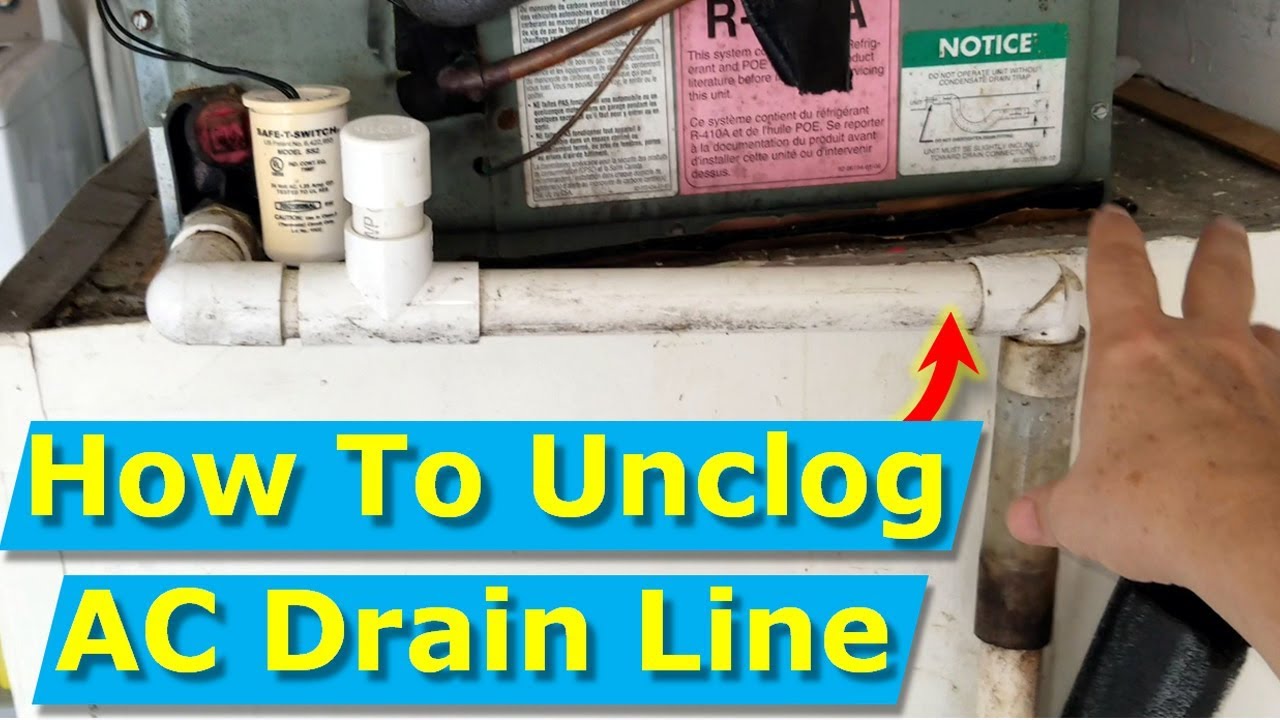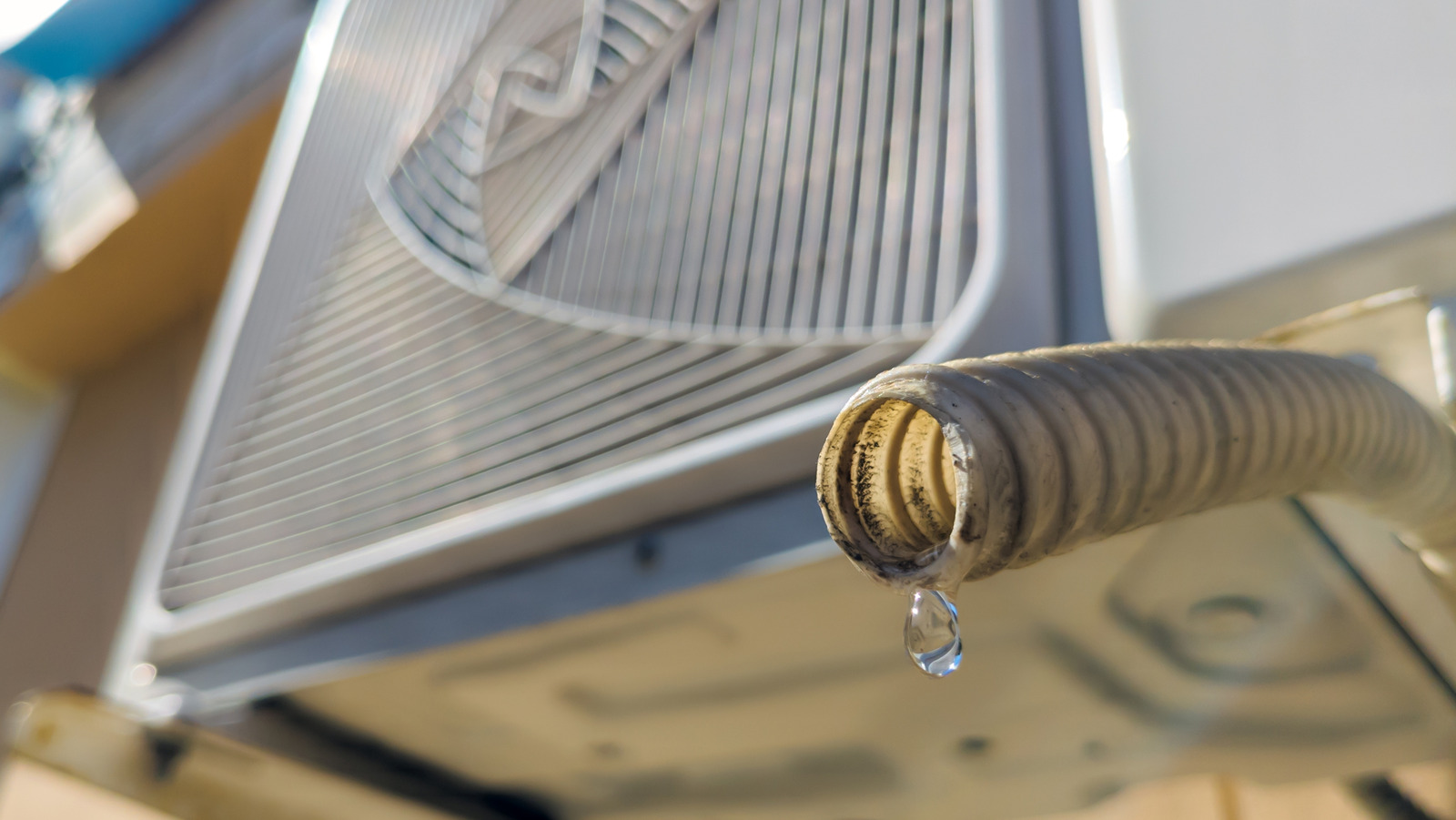How To Unclog Ac Drain Line In Apartment

Unclogging Your Apartment AC Drain Line: A Step-by-Step Guide
A clogged AC drain line is a common issue that can lead to water damage and reduced cooling efficiency in your apartment. Fortunately, it’s often a problem you can tackle yourself with the right tools and a little know-how. This guide will walk you through the process of identifying, diagnosing, and clearing a blocked AC drain line.
Safety First!
Before you begin, always turn off your AC unit at the thermostat and, ideally, at the circuit breaker. This prevents electrical shock and potential damage to the system. If you’re uncomfortable working with electrical components, it’s best to call a qualified HVAC technician.
Identifying the Problem: Signs of a Clogged AC Drain Line
Recognizing the symptoms of a clogged drain line early can prevent major headaches. Here are some telltale signs:
- Water Leaks: This is the most obvious sign. Look for water pooling around your indoor AC unit, in the attic, or near the exterior drain line exit.
- Musty Odor: A moldy or musty smell coming from your vents can indicate standing water in the drain pan.
- AC Unit Not Cooling Properly: A clogged drain line can cause the AC unit to shut down or not cool as efficiently.
- Automatic AC Shut Down: Many AC units have a safety switch that will automatically turn off the system if the drain pan overflows.
Tools and Materials You'll Need
Gather these items before you start:
- Wet/Dry Vacuum: For sucking out the clog.
- Stiff Wire or Pipe Cleaner: For breaking up debris. A straightened coat hanger will also work.
- Plumbing Snake (Auger): For deeper clogs.
- Distilled White Vinegar: For flushing the drain line.
- Funnel: To pour vinegar into the drain line.
- Bucket or Towels: To catch any spills.
- Gloves: To protect your hands.
- Flashlight: For better visibility.
Step-by-Step Guide to Unclogging Your AC Drain Line
1. Locate the Drain Line
The drain line is usually a PVC pipe (typically ¾-inch) that exits your indoor AC unit. It may run through a wall or the ceiling. On the outside, it's generally located near the outdoor unit or in a less conspicuous area, such as a utility closet. Sometimes, it may drain into a sink or floor drain. Inside the apartment, the access point to the drain line is usually near the indoor unit. It might be a capped pipe or a visible opening.
2. Find the Drain Pan and Drain Opening
Locate the drain pan beneath your indoor AC unit. This pan collects condensation. Inside the pan, you should find a drain opening where the drain line connects. This is often where clogs form. If the pan is full of water, carefully soak it up with towels or use a wet/dry vacuum.
3. Vacuuming the Drain Line
This is often the most effective method.
- Attach the vacuum hose to the end of the drain line outside (or at the access point you found inside). Ensure a tight seal.
- Turn on the vacuum and let it run for several minutes. This should suck out any debris that's clogging the line.
- Check the vacuum canister or bag for water and debris.
- If you are working from the access point near the AC unit, you may need to seal the vacuum hose with duct tape to the drain line to create a strong vacuum and prevent any debris from being blown back into the unit.
4. Using a Wire or Plumbing Snake
If vacuuming doesn't work, try using a stiff wire or plumbing snake.
- Carefully insert the wire or snake into the drain line opening.
- Gently push and twist the wire to break up the clog. Avoid forcing it, as you could damage the pipe.
- Remove the wire and clean off any debris.
- Repeat this process several times until you feel the clog has been cleared.
5. Flushing with Vinegar
Vinegar is a natural and effective way to kill mold and algae that contribute to clogs.
- Pour about a cup of distilled white vinegar into the drain line opening using a funnel.
- Let the vinegar sit in the line for at least 30 minutes (or even overnight for stubborn clogs).
- After soaking, flush the line with water to remove any remaining debris and vinegar.
6. Reassemble and Test
Once you’ve completed these steps:
- Reconnect any disconnected parts of the drain line.
- Turn your AC unit back on at the thermostat and circuit breaker.
- Monitor the drain line to ensure water is flowing freely. Check for any leaks around the unit.
Preventative Maintenance
Preventing clogs is easier than clearing them! Here are some tips:
- Flush the Drain Line Regularly: Pour a cup of distilled white vinegar down the drain line every 1-2 months to prevent mold and algae growth.
- Clean the Drain Pan: Periodically clean the drain pan with a mild bleach solution (diluted with water) to prevent buildup.
- Air Filter Replacement: Change your AC air filter regularly (every 1-3 months) to reduce dust and debris entering the system. A dirty air filter restricts airflow and can lead to condensation and clogs.
Common Causes of AC Drain Line Clogs
Understanding the causes can help you prevent future problems:
- Algae and Mold Growth: This is the most common cause, especially in humid environments.
- Dust and Debris: Dust, dirt, and pet hair can accumulate in the drain line and create blockages.
- Insects: Small insects can sometimes enter the drain line and create nests or die, leading to clogs.
- Sludge: A slimy buildup can form in the drain line over time.
When to Call a Professional
While many drain line clogs can be resolved with DIY methods, some situations require professional help. Call an HVAC technician if:
- You've tried the above steps and the clog persists.
- You suspect a more serious problem, such as a damaged drain line or a malfunctioning AC unit.
- You're uncomfortable working with electrical components or plumbing.
- You notice signs of mold growth in your apartment due to the water leak. Extensive mold remediation should always be handled by qualified professionals.
Estimated Repair Costs
If you need to call a professional, here’s a general idea of the costs you might expect:
- Simple Drain Line Unclogging: $75 - $200. This typically includes diagnosing the problem and clearing the clog using standard methods.
- Drain Line Replacement: $150 - $500. If the drain line is damaged or corroded, it may need to be replaced. The cost will depend on the length and complexity of the replacement.
- AC Unit Inspection and Repair: $100 - $1000+. If the clogged drain line has caused damage to other components of the AC unit, such as the blower motor or compressor, additional repairs may be necessary. This can significantly increase the overall cost.
Note: These are just estimates, and the actual cost may vary depending on your location, the HVAC technician's rates, and the specific problem you're facing. Always get a quote from a qualified professional before authorizing any repairs.
Working With Your Landlord
If you rent your apartment, check your lease agreement to understand your responsibilities for maintenance and repairs. While you can often attempt simple fixes like unclogging the drain line yourself, it’s essential to inform your landlord about the issue, especially if it’s causing water damage or other problems. They may prefer to handle the repair themselves or have a specific HVAC contractor they work with. Document all communication with your landlord regarding the issue and any steps you take to address it.
By following these steps, you can often resolve a clogged AC drain line in your apartment and prevent future problems. Remember to prioritize safety and call a professional when needed. A little maintenance can go a long way in keeping your AC running efficiently and preventing costly repairs.










